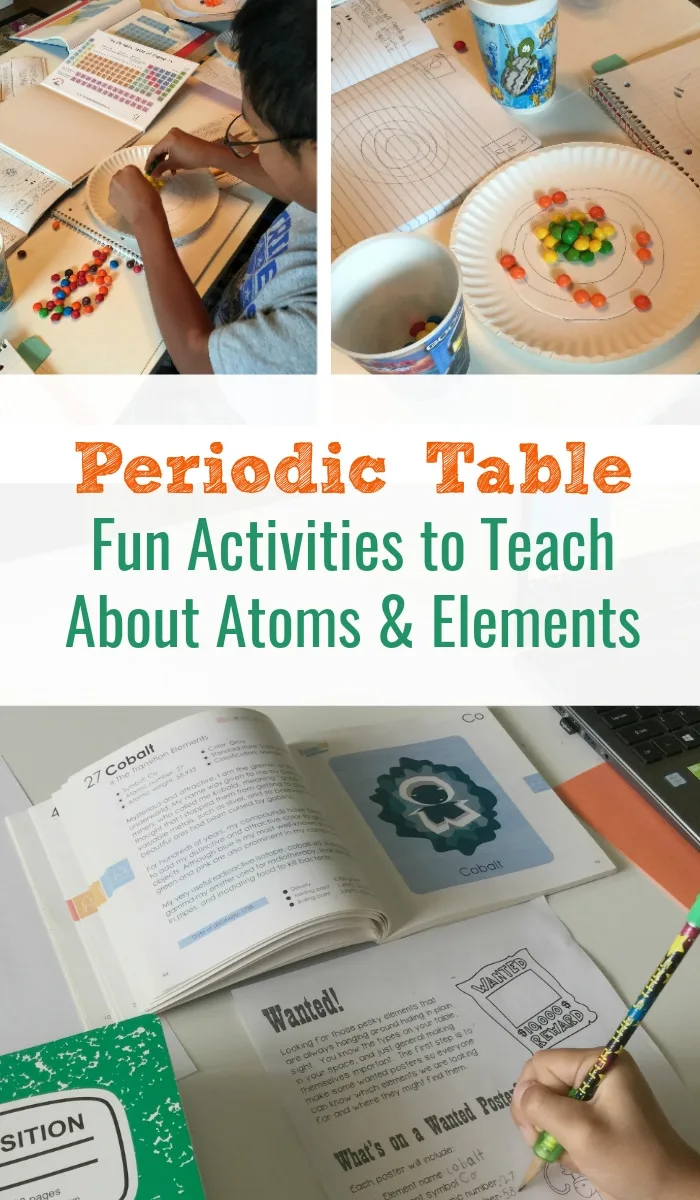Beginner’s Guide to Kitchen Chemistry. Using Everyday Items to Teach Chemical Concepts.
Kids love blowing up things! At least my kids do. Our first Tinker Crate was a rocket and it was a hit. If you are trying to figure out how to incorporate more chemistry experiments into your curriculum, but the budget is an issue – look no further than your kitchen cabinets.
What is kitchen chemistry?
Kitchen chemistry involves using everyday items that you can find in your kitchen or local discount store to explore basic chemistry. You can do so much with so little if you use some imagination and some overflow trays. As always, consider appropriate safety precautions. This post contains affiliate links and ads, you can read my full disclosure here.

My top 5 supplies for kitchen chemistry.
- Hydrogen Peroxide
- Vinegar
- Yeast
- Dish Soap
- Baking Soda
If you want the rest of my kitchen chemistry supply suggestions, grab this supply shopping list.
There is so much that you can do with these simple ingredients to explore chemistry. I’m going to give you three and they are all going to illustrate the question (and answer) of…
Physical or chemical change?
Matter has physical and chemical properties.
Physical properties are used to observe and describe and can be determined without changing the chemical composition of the matter.
Chemical properties describe its “potential” to undergo some chemical change or reaction. These properties are determined by what elements, electrons, and bonding are present to give the potential for chemical change.
There are also two types of changes that matter can go through. These two classes of change are called physical and chemical changes.
Physical changes occur without changing the molecular composition of a substance. The same element or compound is present before and after the change. Physical changes are related to physical properties.
Chemical changes occur when the atoms in a substance are rearranged in order to make a new substance. A chemical change alters the chemical composition of the original matter. Since the types of matter that can be created will be determined by the reactions that can take place, chemical properties are related to chemical changes.
Making a gas

Supplies:
- baking soda
- vinegar
- dish soap
- tall cylinder (water bottle, graduated cylinder, plastic test tube)
Procedure:
- Using a tall cylinder add 1 tsp of baking soda, a drop or two of dish soap, and 20ml of vinegar.
- Watch.
A soapy bubbly liquid should overflow the container.
What is happening?
A chemical reaction (so it is a chemical change)
C2H4O2 + NaHCO3 → NaC2H3O2 + H2O + CO2
Acetic Acid Sodium Bicarbonate Sodium Acetate Water Carbon Dioxide
The combination of the vinegar (acetic acid) with baking soda (sodium bicarbonate) yields sodium acetate, water, and carbon dioxide (gas).
For this specific reaction, I also like to talk a little about the Law of Conservation of Mass. The Law of Conservation of Mass states that matter cannot be created or destroyed in only changes forms. There will be less volume left in the container after the reaction. Where did it go? Overflow and release of gas will make up the difference. Gas takes up more space than the same amount of a liquid or solid. It will cause the products to expand and “escape” the container.
The soap makes the reaction easier to see but is not a reactant.
The formation of a gas is a sign that a chemical change has occurred.
The Incredible Egg

Exploring physical and chemical changes using an egg and vinegar.
Supplies:
- egg
- vinegar
- timer
- container (mason jars work well)
Procedure:
- Crack open an egg. Was that a physical or chemical change? Physical.
- Put the egg in a container (mason jars are handy for this) and add 5 ml of vinegar and swirl, observe.
- Have students write down observations.
- Let it sit for 5 minutes.
- Come back to the egg and vinegar and add 5 ml. Swirl and observe.
- Write down observations.
- Let it sit for 5 minutes.
- Continue this process until you don’t see any further changes in the egg.
What is happening?
Was this a physical or chemical change? Chemical. Why? because the egg cannot be returned to its original form. What is actually happening? The protein in the egg has been denatured. This means the actual 3-D structure of the egg has been changed and can not be returned to its original shape. This indicates that a chemical reaction occurred.
Want to know more about denaturing proteins? Check out Your Mother Was a Chemist.
You can also make milk plastic to demonstrate this type of change.

The Heat is On

This is another indication that a chemical reaction might have occurred, but not always. Adding heat to water doesn’t cause a chemical reaction, but making elephant toothpaste does.
If you have never made elephant toothpaste, it is a great visual representation of both the change in the amount of space that gas versus liquid takes up and temperature change. If you can grab a scientific thermometer even better, but the difference is enough that kids can touch the side of the glass.
Supplies
- Plastic bottle or graduated cylinder
- Hydrogen peroxide
- Yeast
- Dish soap
- Water
- Thermometer
- Food Coloring (optional)
Procedure:
- Use whatever size container you want. Typically, you see people use a recycled water bottle or graduated cylinder (it makes it look more impressive).
- Add 120 mL of Hydrogen Peroxide to container (you can add a few drops of food coloring if you like)
- Add a few drops of dish soap to the peroxide.
- In a separate container, combine a packet of dry yeast with 4 tbsp of warm water.
- Take the temperature of the peroxide
- Leave in the thermometer and add the yeast mixture (make sure it is an overflow container)
- Watch the reaction and the thermometer.
What is going on?
2H2O2 → 2H2O + O2
Hydrogen peroxide water oxygen
Yeast is used as a catalyst. That means that it makes the reaction happen more quickly and allows it be observed. Catalysts are not part of the reaction and are only used to change the energy required for reactions to occur. In this case, it speeds up the reaction that would normally happen to a rate that is easy to see (due to the foam). The soap is just an indicator. It is easier to see foam rather than just bubbles.
This reaction is highly exothermic in nature. This reaction is called a decomposition reaction because you are taking a compound and breaking it down into smaller parts. When this happens, energy is typically released (as we observe in this reaction).
A substantial temperature change occurs (it will be impacted by how warm the yeast mixture is). The change in temperature CAN be a sign of a chemical change.
These are 3 chemistry experiments that you can do with everyday objects found in your kitchen.







